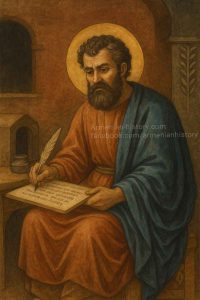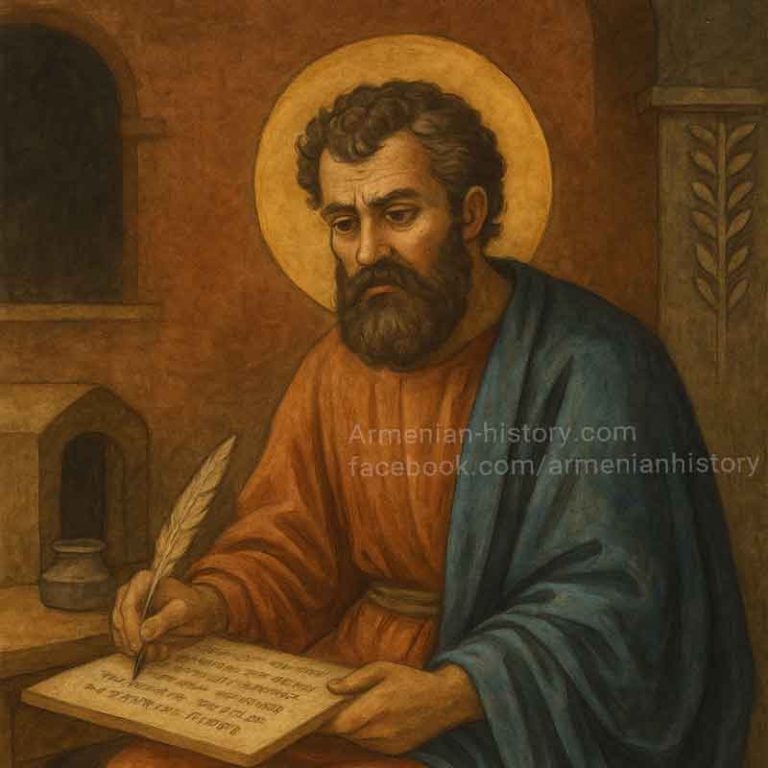Pavstos Buzand, also known as Faustus of Byzantium, is one of Armenia’s most compelling early historians. Writing in the 5th century, he left behind a vivid and action-filled chronicle known as the Epic Histories (Buzandaran Patmut‘iwnk‘), which focuses on one of the most dramatic and defining periods in Armenian history—the 4th century AD. His work gives us a rare glimpse into the political, military, and religious struggles that shaped Armenia’s early Christian identity and its fight for independence between two great empires: Rome and Persia.
Though not much is known about Pavstos himself, his storytelling style stands out. Unlike the formal tone of other Armenian historians, Pavstos writes with urgency and intensity, often describing events like a witness or participant. He brings to life powerful noble families like the Mamikonians, especially the legendary warrior Vardan Mamikonian, and paints a picture of a kingdom balancing between royal power, noble resistance, foreign pressure, and rising Christian faith.

The Epic Histories cover everything from battlefield heroics to royal betrayals and church politics. Pavstos doesn’t shy away from the messy details—assassinations, court intrigues, and violent clashes fill his pages. While some parts of his account may be exaggerated or legendary, modern scholars generally agree that much of his narrative reflects real events and deep knowledge of the time.
More than just a history book, Pavstos’s work captures the soul of a country trying to survive and stay true to its identity in a complex and dangerous world. His writing is a key piece in understanding how Armenia held onto its faith, culture, and sovereignty during one of its most challenging eras.

